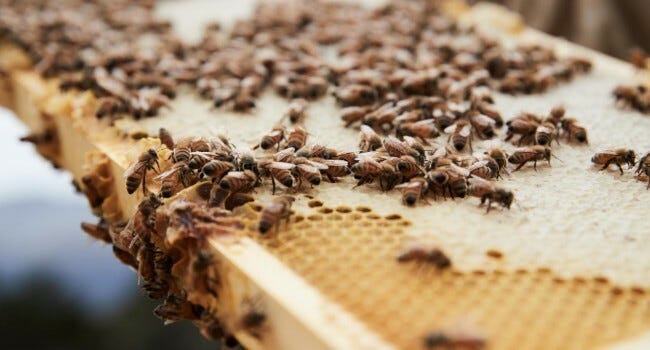
“Honey” is simply not enough for us, here at Swisse. We wanted to find honey that is unique and special, wherever that journey took us. Our search led us to New Zealand, home of the bees that pollinate the native manuka plant.
A tea tree shrub, the manuka plant is abundant with white and pink flowers, and leaves are variable in shape and size. Its pretty exterior proves very tempting for bees, and the resulting manuka honey has a richer colour[1] and earthier flavour than other honeys. In general, darker honeys have a higher content of phenolic compounds and therefore higher antioxidant levels[2], which are great for supporting wellbeing and helping reduce free radical damage. Manuka honey itself is particularly rich in phenolic acids[3], so it’s no wonder this honey is Swisse-approved.
How it’s sourced
The manuka honey story starts in the South Taranaki region of New Zealand. The bees are left in the natural rainforests all year round and the hives are situated on very remote forest blocks. Some of the land is so remote that the beekeepers need to use helicopters to lift the hives into the stands of flowering manuka for the summer.
After the manuka flow, the beekeepers bring all of the hives back to the home block, which has 2,000 acres of native bush for the bees to “winter” on. Importantly, the bees are never exposed to pesticides or other chemicals.
History of honey[4]
The first written reference to the medicinal use of honey came in the form of a Sumerian tablet writing, dating back to 2100-2000 BC. Aristotle (384-322 BC), when discussing different honeys, referred to pale honey as being “good as a salve for sore eyes and wounds”. The medicinal importance of honey has been documented in the world's oldest medical literatures, and since the ancient times, it has been known to possess healing properties.
At Swisse, we love manuka honey inside and out. You can find it in one of our favourites, Swisse Ultiboost Vitamin C + Manuka Honey.
The Quest to find nature’s finest ingredients continues.
References
- Alvarez-Suarez JM, Gasparrini M, Forbes-Hernández TY, Mazzoni L, Giampieri F. The Composition and Biological Activity of Honey: A Focus on Manuka Honey. Foods. 2014;3(3):420-432. Published 2014 Jul 21. doi:10.3390/foods3030420
- Dżugan M, Tomczyk M, Sowa P, Grabek-Lejko D. Antioxidant Activity as Biomarker of Honey Variety. Molecules. 2018;23(8):2069. Published 2018 Aug 18. doi:10.3390/molecules23082069
- Oelschlaegel, Stefanie & Wang, Pang-Ning & Boettcher, Anja & Kölling-Speer, Isabelle & Speer, Karl. (2012). Classification and Characterization of Manuka Honeys Based on Phenolic Compounds and Methylglyoxal. Journal of agricultural and food chemistry. 60. 7229-37. 10.1021/jf300888q.
- Mandal MD, Mandal S. Honey: its medicinal property and antibacterial activity. Asian Pac J Trop Biomed. 2011;1(2):154-160. doi:10.1016/S2221-1691(11)60016-6
